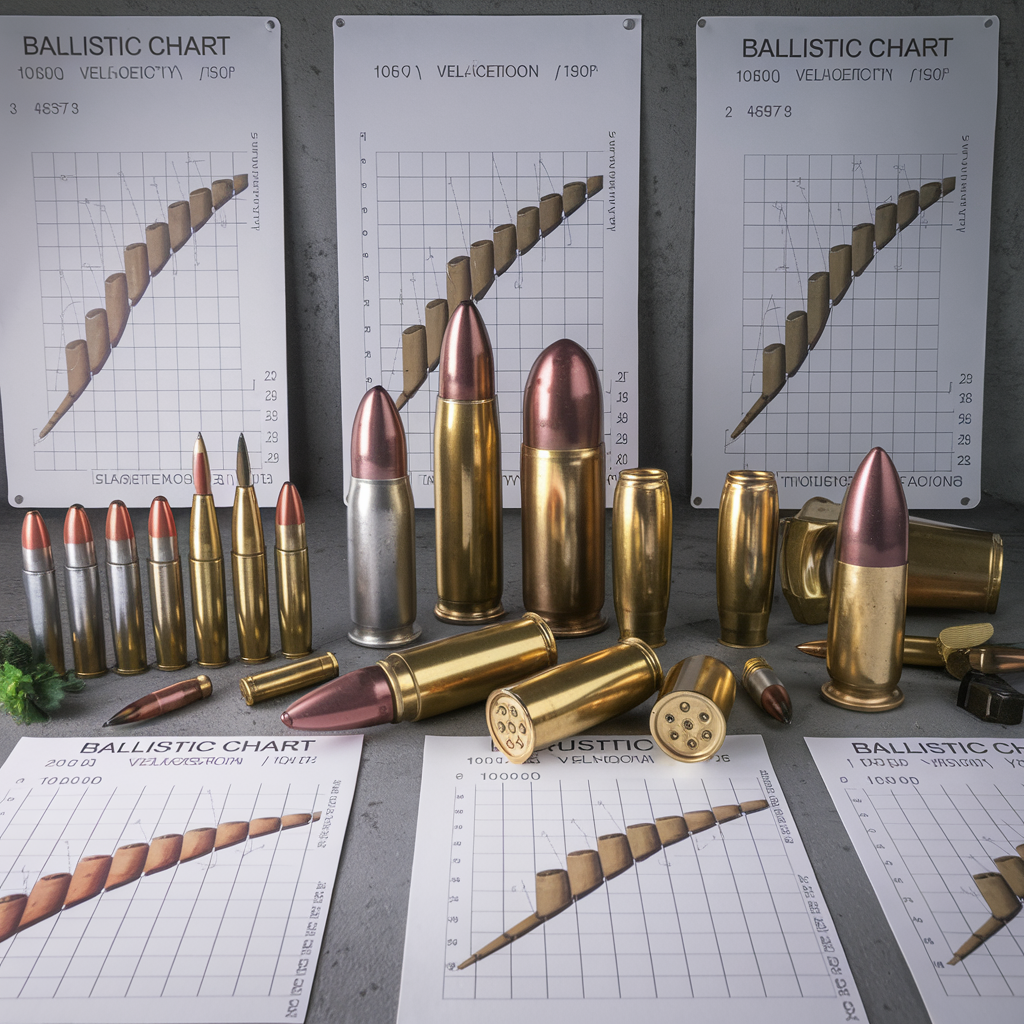Breaking Down the Ballistics of Hunting Ammunition

Introduction
Understanding the ballistics of hunting ammunition is crucial for hunters of all skill levels. Whether you’re preparing for your first hunt or refining your expertise, the performance of your ammunition determines accuracy, efficiency, and, ultimately, success in the field. By breaking down the core aspects of ballistics, you’ll gain insight into what makes ammunition effective and how to make informed choices tailored to your hunting needs.
What Are Ballistics?
Ballistics is the science of how projectiles move. For hunting ammunition, it covers the bullet’s behavior from the moment it leaves the barrel to when it reaches its target. Ballistics is divided into three categories:
- Internal Ballistics: What happens inside the firearm (e.g., combustion of gunpowder and pressure buildup).
- External Ballistics: How the bullet behaves in flight (e.g., trajectory, wind resistance, and velocity).
- Terminal Ballistics: The bullet’s performance upon impacting the target (e.g., penetration, expansion, and energy transfer).
Understanding these categories helps hunters choose ammunition that matches their firearm, target game, and shooting environment.
Key Factors in Hunting Ammunition Ballistics
Many factors influence the performance of hunting ammunition. Below, we break down the most important ones to consider:
1. Caliber
Caliber refers to the diameter of the bullet or the internal diameter of the gun barrel. Larger calibers typically generate more energy, which is beneficial for taking down larger game. However, smaller calibers are often sufficient for small game and provide better precision over long ranges.
Example: A .30-06 Springfield is a popular choice for deer hunting, while a .223 Remington is better suited for varmints.
2. Bullet Weight
Bullet weight, measured in grains, affects trajectory and impact. Heavier bullets often retain more energy and provide better penetration but may travel slower than lighter bullets. Select a bullet weight based on your game and shooting distance:
- Light Bullets: Ideal for small game and long-distance hunting because of their flatter trajectories.
- Heavy Bullets: Better for big game due to deeper penetration and more energy transfer.
3. Bullet Design
Different bullet designs serve specific purposes. When hunting, two designs dominate:
- Hollow-Point or Soft-Point: These bullets expand upon impact, causing significant damage to the target. They are ideal for big game hunting.
- Full Metal Jacket (FMJ): FMJ rounds maintain their shape for deeper penetration. They are less commonly used for hunting but may serve specific purposes.
Choosing the right bullet design ensures humane and effective harvesting of game.
4. Muzzle Velocity
Muzzle velocity measures how fast the bullet exits the firearm. Higher muzzle velocities give bullets flatter trajectories, which improve accuracy over longer distances. However, speed alone doesn’t guarantee success. Balance muzzle velocity with bullet weight and design for optimal results.
5. Energy Transfer
Energy transfer is critical for ethical hunting. A bullet needs enough kinetic energy to penetrate and deliver a lethal blow. Matching the energy transfer of your ammunition with the size and toughness of the game ensures effective results.
- Smaller Game: Requires less energy (e.g., rabbits, coyotes).
- Larger Game: Demands higher energy levels (e.g., elk, moose).
Tips for Choosing the Best Hunting Ammunition
Making the right ammunition choice depends on understanding your needs and preferences. Here are some tips to help:
- Match Ammo with Your Firearm: Always use ammunition that is compatible with your firearm’s specifications. Check your rifle’s manual for guidance.
- Consider Your Target: Select a caliber and bullet type suited to the size and type of game you’re hunting.
- Test Performance: Test different ammunition brands and bullet weights at the range to find what provides the best accuracy and consistency in your firearm.
- Factor in Shooting Distance: For long-range hunting, choose ammunition with high muzzle velocity and energy retention.
- Focus on Ethical Hunting: Prioritize ammunition that delivers clean and humane kills.
Ballistics Example: The .30-06 Springfield
To see these factors in action, let’s examine the .30-06 Springfield, a versatile option that has been popular among hunters for decades:
- Caliber: The .30-06 offers a balanced caliber for medium to large game hunting.
- Bullet Weight: Typically ranges from 150 to 180 grains, making it effective for deer, elk, and even bear.
- Bullet Design: Hunters often use soft-point bullets for reliable expansion and penetration.
- Muzzle Velocity: Speeds range from 2,700 to 3,000 feet per second, ensuring a flat trajectory.
- Energy Transfer: Delivers enough energy to take down large game cleanly.
The .30-06 serves as an excellent example of balanced ballistics that adapt to various hunting scenarios.
Why Ballistics Knowledge Matters
Understanding hunting ammunition ballistics gives hunters a significant advantage. It allows you to:
- Improve accuracy by selecting ammo suited to your firearm and target.
- Enhance consistency by testing and refining your ammunition choices.
- Ensure humane harvesting of game with appropriate energy transfer and bullet performance.
Whether you’re a novice or experienced hunter, prioritizing ballistics knowledge empowers you to make informed and effective decisions.
Conclusion
Breaking down the ballistics of hunting ammunition is key to becoming a confident and successful hunter. By understanding factors like caliber, bullet weight, design, velocity, and energy, you can select ammo that aligns perfectly with your shooting goals. Take the time to test and evaluate your choices, and you’ll enter the field prepared for both precision and ethical hunting. For more firearm knowledge and gear recommendations, explore our resources at 2AGun.com.


